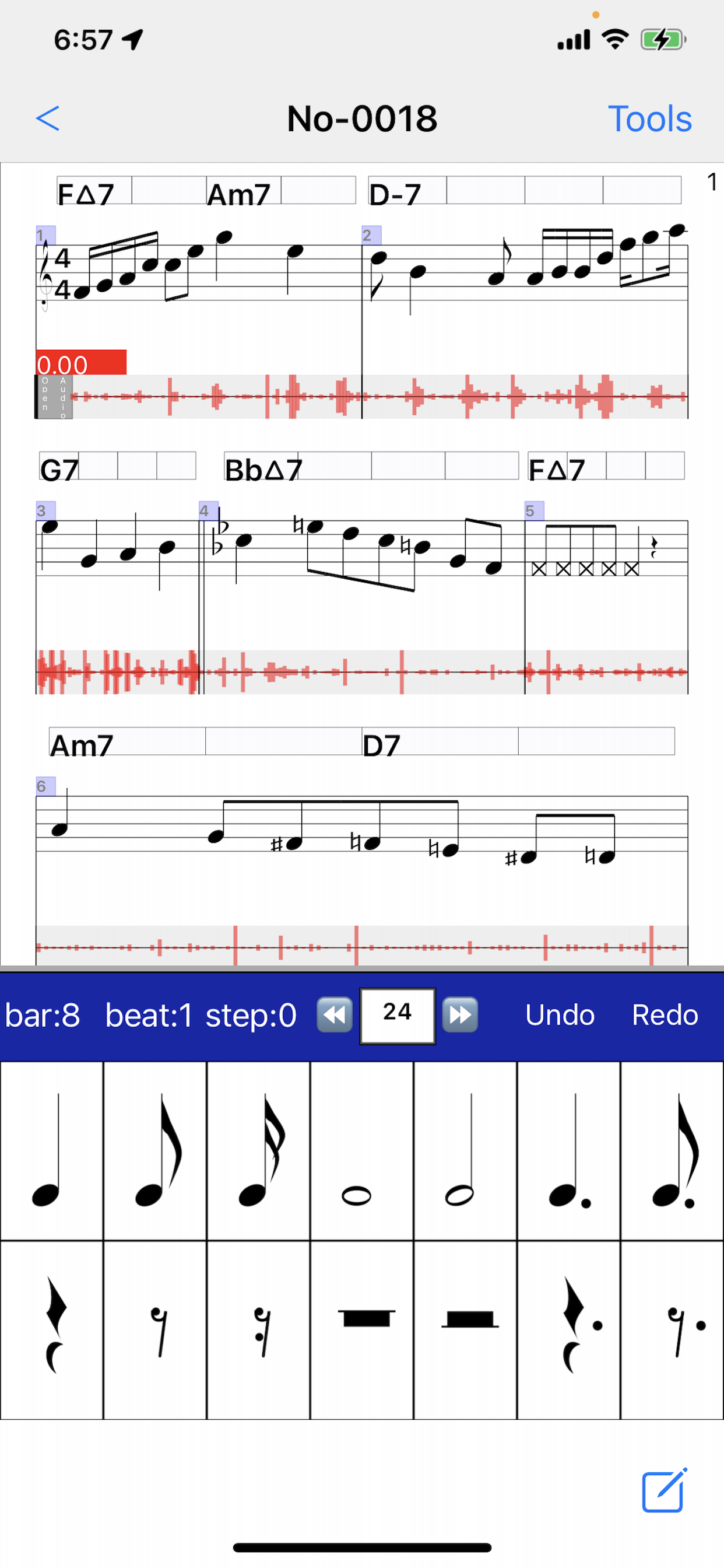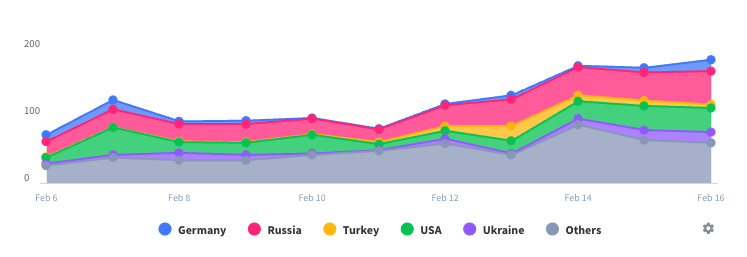
Описание
This app is designed to support musical instrument practice. It allows you to view and listen to both a reference audio file (such as a recording or a track from your music library) and sheet music on the same screen. By listening to the reference performance while writing or reviewing sheet music, you can strengthen the connection between the music and the notation, helping you achieve a more ideal performance. Ultimately, you may even be able to reproduce the music in your head through your instrument.
Selecting Audio
There are two ways to choose a reference audio file:
1 Selecting from the Music Library You can select a song from your Apple Music library.
2 Recording with a Microphone You can record using the microphone on your iPad or iPhone. If no audio track is selected, tapping the track will open the recording screen. Press "Rec new audio file" to start recording. To stop recording, tap the audio track and select "Stop Recording" from the dialog.
The audio track functions as a player. You can tap any position on the track to start playback from that point. The player controls appear above the sheet music input dialog at the bottom of the screen, allowing you to play, stop, and adjust playback speed.
Creating Sheet Music
While using pre-existing sheet music is convenient, transcribing it yourself is a great way to improve your skills.
1 Setting the Time Signature and Tempo First, determine the time signature and tempo of the piece. Since many popular songs use a 4/4 time signature, this is set as the default. The default tempo is 60 BPM, but you can adjust it using the "Tempo Change Dialog."
2 Synchronizing Sheet Music and Audio While playing the audio, identify the starting points of measures. If the measure positions and the audio are misaligned, use the "Beat Anchor" feature to adjust them. By adding anchors, you can link playback time with measure positions, creating a more precise score. Adding multiple anchors will allow the app to calculate the tempo automatically. If the time signature changes during the piece, you can add a time signature mark to any measure.
Main Features
1 Linking Audio and Sheet Music You can select a song from your music library or use a recorded audio file and link it to your sheet music. Setting anchors helps streamline the transcription process.
2 Separate Input for Rhythm and Pitch The app supports a training-based approach by allowing users to input rhythm and pitch separately. Entering rhythm first and then pitch ensures more accurate transcription.
3 Vertical Scrolling for Sheet Music The sheet music can be scrolled vertically for easier viewing. This option can be enabled in the settings.
4 Adding and Editing Tracks You can freely add and edit tracks, including chords, notes, text, and audio.
5 Audio Playback Speed Adjustment Adjust the playback speed to make transcription and practice easier.
6 Sheet Music Viewer Import sheet music from PDF or images and view them easily within the app.
7 Metronome Feature The built-in metronome automatically scrolls the sheet music according to the tempo and time signature set in the score.
8 Second Voice Part Notation The app now supports second voice parts in sheet music. To enable this, go to "Edit Track(s)" and select an individual Note Track, then check "Second Voice Part." This allows you to enter a second voice part for that track. To enter second voice notes, tap the lower area of the staff. You can also prioritize second voice selection by enabling the "2nd Voice" option in the note input view.
9 Adding Slurs and Text to Sheet Music You can now input slurs and text onto the sheet music. Simply select a range of notes and use the popup menu to add them.
Встроенные покупки
- Usage License
- 5.00 r
- Subscription license
- 99.00 r
Скриншоты
Music & Audio Notebook Частые Вопросы
-
Приложение Music & Audio Notebook бесплатное?
Да, Music & Audio Notebook можно скачать бесплатно, однако в приложении есть встроенные покупки или подписки.
-
Является ли Music & Audio Notebook фейковым или мошенническим?
Недостаточно отзывов для надежной оценки. Приложению нужно больше отзывов пользователей.
Спасибо за ваш голос -
Сколько стоит Music & Audio Notebook?
Music & Audio Notebook имеет несколько покупок/подписок внутри приложения, средняя цена покупки составляет 52.00 r.
-
Сколько зарабатывает Music & Audio Notebook?
Чтобы получить оценку дохода приложения Music & Audio Notebook и другие данные AppStore, вы можете зарегистрироваться на платформе мобильной аналитики AppTail.


Music & Audio Notebook Отзывы Пользователей
Оценки


Music & Audio Notebook Конкуренты
Music & Audio Notebook Установки
30дн.Music & Audio Notebook Доход
30дн.Music & Audio Notebook Доходы и Загрузки
Зарегистрируйтесь сейчас, чтобы получить доступ к статистика загрузок и доходов и многому другому.
Информация о приложении
- Категория
- Music
- Разработчик
- Kunio Arai
- Языки
- Japanese, English
- Последнее обновление
- 3.39 (4 дня назад )
- Выпущено
- Jul 7, 2023 (2 года назад )
- Также доступно в
- Япония, Финляндия, Азербайджан, Филиппины, Литва, ОАЭ, Южно-Африканская Республика, Республика Корея, Непал, Малайзия, Индия, Португалия, Соединенные Штаты, Эстония, Тайвань, Нигерия, Армения, Сингапур, Румыния, Нидерланды, Чехия, Мадагаскар, Австралия, Вьетнам, Латвия, Пакистан, Франция, Бразилия, Дания, Алжир, Болгария, Хорватия, Китай, Великобритания, Перу, Таиланд, Казахстан, Греция, Бруней, Словения, Канада, Новая Зеландия, Эквадор, Мексика, Бельгия, Ливан, Чили, Италия, Аргентина, Кувейт, Беларусь, Саудовская Аравия, Индонезия, Израиль, Швеция, Германия, Швейцария, Узбекистан, Россия, Тунис, Ирландия, Норвегия, Турция, Доминиканская Республика, Египет, Бахрейн, Исландия, Люксембург, Австрия, Колумбия, Польша, Венгрия, Испания, Украина, Гонконг (САР)
- Обновлено
- 2 дня назад








